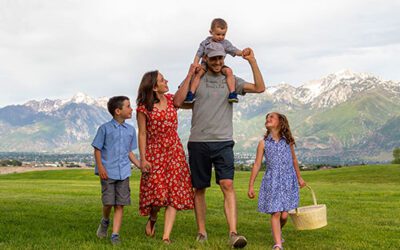
The beginning of your post‐adoption contact with the adoptive parents and your child means you are moving from one part of your adoption journey to another. It can be intimidating to think about what your future relationships might look like and how they might work.
As you decide what your future relationship with your child will look like, it can help to have insight into what might work for you. So here are four open adoption questions to ask yourself about the level of contact you think is right for you.
1. What type of contact do I want throughout the adoption?
Every open adoption is different regarding what type of contact there will be after the adoption. Typical contact includes:
- Phone calls
- Letters
- Emails
- Pictures
- In-person visits
- Texts
How much contact you’ll have with your child is something that you’ll decide with the adoptive parents you choose for your baby. It’s up to you whether you’d like to keep in touch frequently or just a few times a year. We encourage you only to have as much contact as you’re ready for; don’t feel pressured into sharing more than you’re ready to. For example, you might only be comfortable with emailing back and forth, and choose to keep the info you share very brief. That’s perfectly fine, since you have the power to choose any type and amount of future contact.
2. Do I want to have an in-person visit with my child?
Some birth mothers decide they want to see their child at least once a year. You may have more contact depending on your relationship with the adoptive family and where you live. Typically, open adoption visits happen once or twice a year in a public place such as a restaurant or park.
Of course, it’s a good idea to set some boundaries for your in-person visits. For example, will you visit for a few hours or stay at a hotel in their town for the weekend? Depending upon your situation, how you feel about this contact and how the adoptive family feels will all affect your in-person visits with your child.
3. How do I feel about sending or receiving gifts?
Sometimes, especially at the child’s birthday or during the holidays, the birth parents and the adoptive family might exchange gifts. These gifts might range from age‐appropriate toys to something as simple as a “thinking of you” card.
Whether you give your child gifts or receive gifts from the adoptive parents will depend upon your state’s adoption laws as well as your relationship with the adoptive family. It’s good to bring this up when you decide the level of contact you want to have in the open adoption. You don’t need to feel pressured to share more info that you’re ready for or keep promises that you’re not able to. It’s always good to discuss this with your Adoption Coordinator, especially if you have any concerns or questions.
4. Will I need some space post-adoption?
It’s normal to feel a sense of loss and grief after adoption. You may experience a combination of grief and sadness, denial, and even bouts of depression. Working through these things is an important part of the adoption process.
Some birth mothers may grieve the loss of having a closer relationship with their child. Others may fear seeing their baby in person because they think it will prevent them from moving forward and getting complete closure. Every birth mother’s experience is different, and while open adoption doesn’t guarantee that you won’t have grief and sadness, it does allow you to see for yourself that your child is loved and happy.
You may be comfortable receiving pictures and letters from the adoptive family for a while, waiting for in-person contact until you’re ready. Some birth mothers ask their adoption agency to hold any pictures or letters for them, and when they’re ready for them, the agency can forward them.
It’s hard to know exactly how you’ll feel after the adoption, since this will be a new experience. So that you can get an idea of what your adoption experience might be like in those first few months postpartum, we encourage you to speak with a member of our peer support team. It can really help to talk with another woman who has faced a similar situation and placed her child for adoption. Of course, her story may be different, but a peer counselor will still understand how you feel and the emotions you are facing.
Open Adoption Questions to Ask Yourself
So right now, you might be wondering, “What are the benefits of open adoption for me?” Open adoptions have many benefits for birth mothers, including maintaining contact with their children throughout their lives. When you choose an open adoption, you will get to see your child as they grow up. Staying in contact with your child helps you feel relieved you made the right choice.
The level of contact depends upon what you’re comfortable with and what you agree upon with the adoptive parents. Hopefully, these four open adoption questions to ask yourself will help you think about what contact will look like for you and your child.
As Vice President of Lifetime Adoption, Heather Featherston holds an MBA and is passionate about working with those facing adoption, pregnancy, and parenting issues. Heather has conducted training for birth parent advocates, spoken to professional groups, and has appeared on television and radio to discuss the multiple aspects of adoption. She has provided one-on-one support to women and hopeful adoptive parents working through adoption decisions.
Since 2002, she has been helping pregnant women and others in crisis to learn more about adoption. Heather also trains and speaks nationwide to pregnancy clinics to effectively meet the needs of women who want to explore adoption for their child. Today, she continues to address the concerns women have about adoption and supports the needs of women who choose adoption for their child.
As a published author of the book Called to Adoption, Featherston loves to see God’s hand at work every day as she helps children and families come together through adoption.




0 Comments